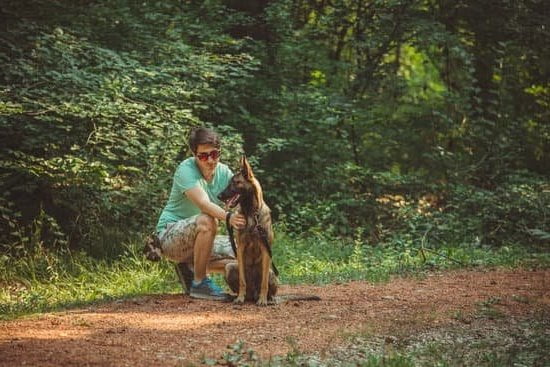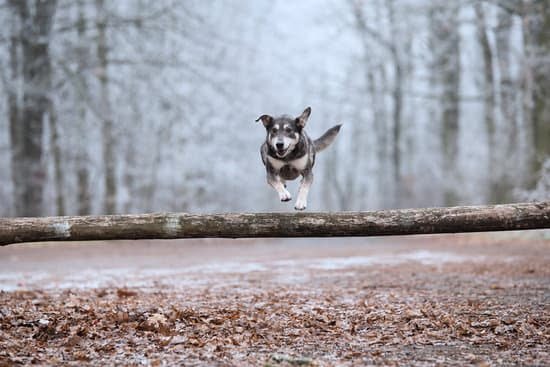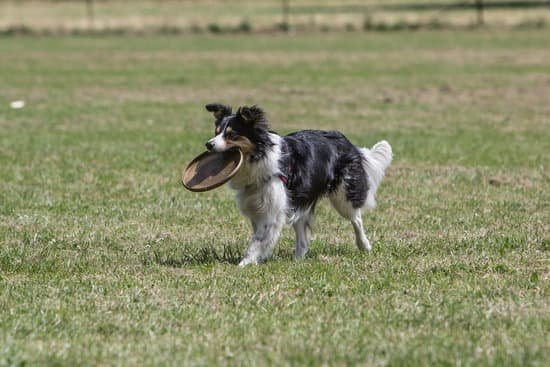Introduction
Guide dogs provide invaluble assistance to those who are visually impaired or have other disabilities. However, not all guide dogs are able to pass the rigorous training they must go through to become certified service animals. This article delves into what happens to these dogs once they fail their training.
First, it’s important to note that failure is not an indication of a dog’s intellect or emotional capacity in any way. Many factors may contribute towards a guide dog’s failure—it could be because of health issues, personality clashes with their new owners and handlers, potential distraction from other animals and loud noises in public places, etc. In any event, whether the reason for failure is physical or mental, the result is the same: that particular animal soon finds itself on its own again—no longer part of the elite group of service animals.
But this does not mean that these non-certified guide dogs become ‘excess baggage’ either; rather these guides can still serve society in other meaningful roles after failing. For instance, some former guide puppies may make wonderful family pets while others find great success serving as therapy animals or military working dogs. Other possibilities often include search and rescue or as bomb-sniffing dogs in law enforcement facilities.
Thus it can be said that there are unique opportunities awaiting even failed guide dogs that don’t experience the thrill of being officially appointed as a service animal; potentially life changing roles in fields like therapy work, protection and support services are just some ways these noble canine creatures can still make a real difference in people’s lives too!
The Ideal Characteristics of a Guide Dog
When it comes to selecting a guide dog, there are certain characteristics that are desired when assessing a potential pup. Generally, these animals should have strong senses, such as good eyesight and hearing- this allows them to lead their human friends with confidence. Guide dogs should also be friendly and confident in their own abilities- too timid of a pup can become easily overwhelmed and confuse their human companion. Additionally, a dog that is willing to listen and obey commands is essential for successful training; however, if the animal does not respond well to training or lacks the necessary qualities to lead someone safely through their daily routine, then sometimes other careers must be considered for them. Alternative jobs for non-qualified guide dogs may include therapy work or serving as companion dogs. If the dog fails in its attempt to become a guide animal, they may find new places at nursing homes or even with families who need some extra love and affection. Ultimately, guide dogs who don’t make it through training still end up making meaningful contributions in various ways.
The Responsibilities Involved in Guide Dog Training
Guide dog training is a very important and responsible task. Training organizations, such as Guide Dogs for the Blind, have experienced trainers to work one-on-one with each dog. They are trained to command the dogs properly, work on behavior issues that arise during their training sessions, and help them to eventually become an effective guide dog for someone in need.
During their training, puppies go through various phases depending on their age. In this time they learn basic obedience and how to respond to simple commands while being socialized with different people and environments so they can adjust easily. As they grow and have more experience in the real world, more complex tasks are added to increase their confidence around unfamiliar surroundings and practice leading people who are blind or visually impaired with accuracy.
However, there may be times when a puppy does not progress as well as expected or fails certain criteria needed for becoming a guide dog. If this happens then the organization works with trainers to see if further training might be possible or if it would be best for the puppy’s wellbeing that it either transitions into another role or is individually adopted out by a loving family.
Challenges Faced by Guide Dogs During Training and What Can Go Wrong
The journey of guide dogs in training is challenging, and occasionally they don’t meet the high standards required to become a full-fledged service animal. What happens when that occurs depends on the situation and the dog’s individual merits, but there are generally three outcomes. The first is that if only one or two specific behaviors are causing an issue, a trainer can sometimes remedy the situation with additional support and guidance. If further retraining does not work, then a change in circumstances or environment may be necessary for the pup to move forward.
The second outcome is that if it is determined that the dog simply isn’t cut out for a job as a guide dog, it may be retired from the program and will be available for adoption by a loving family who can provide it with plenty of love and attention. Lastly, depending on an organization’s policies regarding partner placement, these retired dogs may be suitable to become pet therapy animals for hospitals or other organizations where their skills can be used without requiring them to become official guide dogs.
Common challenges faced by guide dogs during their training include distraction due to loud noises or large crowds of people, difficulty separating distractions from focus tasks, poor leash manners such as excessive pulling on walks, unresponsiveness to commands in certain contexts such as busy streets or strongly scented areas, and poor recall when interrupted during task completion. In order to ensure success in the field, trainers must have comprehensive knowledge of breed characteristics and environmental factors so they can recognize potential issues right away and address any difficulties before progressing further into work-based tasks.
Different Retraining Processes for Guide Dogs
Guide dog trainers are faced with the difficult job of deciding when to keep a guide dog in training and when to decide it may be best for both the guide dog and its potential handler if it moves onto something else. If a guide dog does not pass training, there are a number of options available for retraining the animal.
The most common option is to transfer the guide dog to a different program to be trained in other roles such as therapy or assistance dogs. Depending on the age and circumstances of the animal, these may include roles such as visiting nursing homes and hospitals, working in schools or other public settings (such as airports), participating in search and rescue programs, assisting individuals with disabilities like autism, or providing family companionship.
In some cases, they may also be sold through a responsible breeder provider program so that they can serve as house pets. This has become less common however due to increased awareness of shelter adoptions for animals no longer able to be service animals. Regardless of what path is chosen for them, each individual receives the proper care and attention needed according to their specific needs.
How Families Can Support Guide Dogs That Fail the Training Process
Families that are interested in supporting guide dogs that fail the training process have a few options. First, they can contact a reputable guide dog organization and inquire about adopting an adult guide dog that has failed its training due to health or behavioral reasons. These organizations will be able to provide additional information on the individual dog and their status as a potential companion for families who are open to adopting retired service animals.
When it comes to emotional support, families can offer love and affection to encourage the guide dog’s emotional recovery from the failed training process. Families can also incorporate activities into their routine that keep the dog engaged and stimulated, such as providing interactive toys and activities, setting aside time for regular exercise, and providing plenty of opportunity for social interaction. Finally, families can provide strategic guidance by offering special instruction on appropriate behaviors specific to their environment as well as continuing education opportunities through online classes or seminars offered by experienced professional trainers. All these measures are aimed at boosting the chance of successful re-entry into life with a family or an alternative career path within an organization dedicated to guiding those who need it most.
Working With a Trainer to Identify a New Career Path for Guide Dogs
When guide dogs fail their training, they don’t have to be given up. Instead, trainers and care providers can work together to provide the dog with a new career path that fits its talents. Some dogs might make great therapy animals, for example, or even excel in agility sports. After being assessed for any specific needs the dog might have – such as an increased need for exercise or an affinity towards chasing small animals – the trainer will introduce it to activities that match its energy level, confidence and overall behavior. From there, professional teams of trainers can then work to help improve the dog’s skills over time. After several months of careful assessment and specialized training courses tailored specifically for the dog, these extraordinary animals can still lead a fulfilling life helping others in any way possible.
Potential Career Paths for Guide Dogs Who Don’t Pass Their Training
When a guide dog does not pass their training, it does not necessarily mean the end of their careers. Most organizations that specialize in training guide dogs have protocols for assessing the suitability of animals for completion of the program. If a potential guide dog is determined to be better suited towards another profession, there are many career paths available. This may include therapeutic or service roles such as being a comfort animal, emotional support pet, therapy animal, assistant animal, or medical alert canine. These types of activities provide both emotional and physical aid to those with various physical or emotional disabilities. Guide dogs who do not pass their training may also work as search and rescue animals, airport detectors, detection canines for law enforcement agencies and customs departments, narcotics dogs in hospitals, shelters, prisons and detention centers; or they may even become assistance animals in educational settings such as classrooms and libraries. Regardless of which path is chosen for a guide dog that fails training, all organizations agree that these animals should experience a happy and full life wherever their destiny may take them!
How Shelters Support Guide Dogs Who Don’t Make the Grade
Some guide dogs who have not been able to complete their training due to physical or behavioral issues may be re-homed in other situations where they can still provide companionship and love alongside conducting more basic tasks. Shelters, such as those associated with the Guide Dog Foundation for the Blind, are available to take in dogs whose training has not been successful. These shelters provide supportive homes for retired, aged or ill guide dogs, and also those who didn’t make it through the rigorous training course. In many cases, these dogs who failed their formal training may still live out productive lives full of joy and enrichment by living in a home environment; however, due to safety reasons, most guide dogs ineligible for a career will remain in the care of shelters until an appropriate home is found. Many facilities house a number of ineligible guide dogs at a time and offer quality life-long care where they can live out their days surrounded by tender loving care and support.
Resources Available for Guide Dogs and Their Owners
The goal of guide dog training is for a seeing eye dog to become a reliable and trustworthy companion for their handler. Despite the best efforts of trainers, some guide dogs are unable to complete their training program due to medical or behavioral issues. For example, if a dog is found to have a health problem such as vision impairment or hip dyspecia, or demonstrate aggressive behavior or anxiety that cannot be managed, then it is likely the dog will not be able to continue in the program.
When this occurs guides dogs that have failed their training should not be euthanized; instead they should have another chance at finding a loving home. Organizations like Guiding Eyes for the Blind often make these retired guide dogs available through their adoption program, so that even though they may not qualify as working service animals anymore, they can still lead happy and healthy lives with new families who will treat them as pets.
There are also many national organizations that provide support to both guide dogs and their owners. These organizations offer assistance with everything from fundraising and funding opportunities so that individuals who need a service dog can obtain one, to providing education on how to care for service animals and assistance with access rights when taking them out in public places. They also provide online forums where handlers can connect with each other and find emotional support related to disability issues.
Conclusion
When a guide dog does not complete the rigorous training necessary to become a service animal, it does not necessarily mean the end of the world. There are numerous alternative options to explore before completely giving up on a potential working dog. Often trainers work to match the dog with another career path, such as becoming an assistance animal or pet therapy dog. Additionally, many trainers will refer their former canine pupils to guides-dog owning families willing to offer them loving homes as pets.
Ultimately, when choosing any kind of animal it’s important to make sure its needs and abilities suit your lifestyle. With that in mind, if you choose an animal like a guide dog that requires specialized training, it is important to be prepared for anything that may come its way. By understanding what could happen if the pup doesn’t pass its tests, you can feel better about making important decisions and focusing on harnessing each individual’s best potential for future success. No matter what happens during a guide dog’s training process, there is always a way for all parties involved—owner and pup alike—to benefit from the experience.

Welcome to the blog! I am a professional dog trainer and have been working with dogs for many years. In this blog, I will be discussing various topics related to dog training, including tips, tricks, and advice. I hope you find this information helpful and informative. Thanks for reading!





